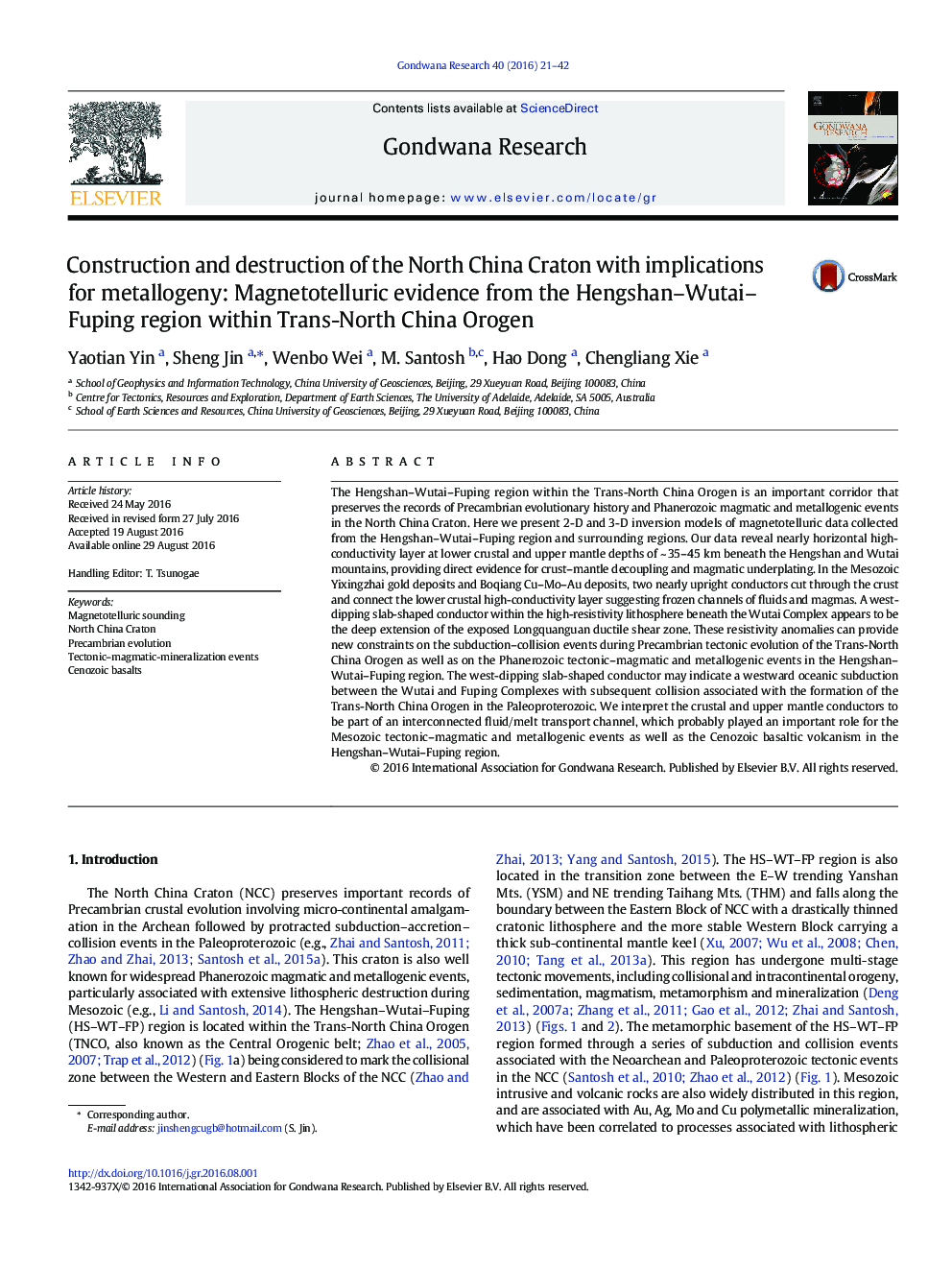| Article ID | Journal | Published Year | Pages | File Type |
|---|---|---|---|---|
| 4726542 | Gondwana Research | 2016 | 22 Pages |
•A lower crustal conductive layer beneath HS-WT indicating decoupling or underplating.•Image of a fossil oceanic subduction zone between Wutai and Fuping micro-blocks.•Phanerozoic mantle upwelling channels might be the reactivated Precambrian weak zones.•An integrated model of Mesozoic tectonic-magmatic and metallogenic events.•A 3-D resistivity model depicting Cenozoic asthenospheric upwelling and underplating.
The Hengshan–Wutai–Fuping region within the Trans-North China Orogen is an important corridor that preserves the records of Precambrian evolutionary history and Phanerozoic magmatic and metallogenic events in the North China Craton. Here we present 2-D and 3-D inversion models of magnetotelluric data collected from the Hengshan–Wutai–Fuping region and surrounding regions. Our data reveal nearly horizontal high-conductivity layer at lower crustal and upper mantle depths of ~ 35–45 km beneath the Hengshan and Wutai mountains, providing direct evidence for crust–mantle decoupling and magmatic underplating. In the Mesozoic Yixingzhai gold deposits and Boqiang Cu–Mo–Au deposits, two nearly upright conductors cut through the crust and connect the lower crustal high-conductivity layer suggesting frozen channels of fluids and magmas. A west-dipping slab-shaped conductor within the high-resistivity lithosphere beneath the Wutai Complex appears to be the deep extension of the exposed Longquanguan ductile shear zone. These resistivity anomalies can provide new constraints on the subduction–collision events during Precambrian tectonic evolution of the Trans-North China Orogen as well as on the Phanerozoic tectonic–magmatic and metallogenic events in the Hengshan–Wutai–Fuping region. The west-dipping slab-shaped conductor may indicate a westward oceanic subduction between the Wutai and Fuping Complexes with subsequent collision associated with the formation of the Trans-North China Orogen in the Paleoproterozoic. We interpret the crustal and upper mantle conductors to be part of an interconnected fluid/melt transport channel, which probably played an important role for the Mesozoic tectonic–magmatic and metallogenic events as well as the Cenozoic basaltic volcanism in the Hengshan–Wutai–Fuping region.
Graphical abstractFigure optionsDownload full-size imageDownload as PowerPoint slide
